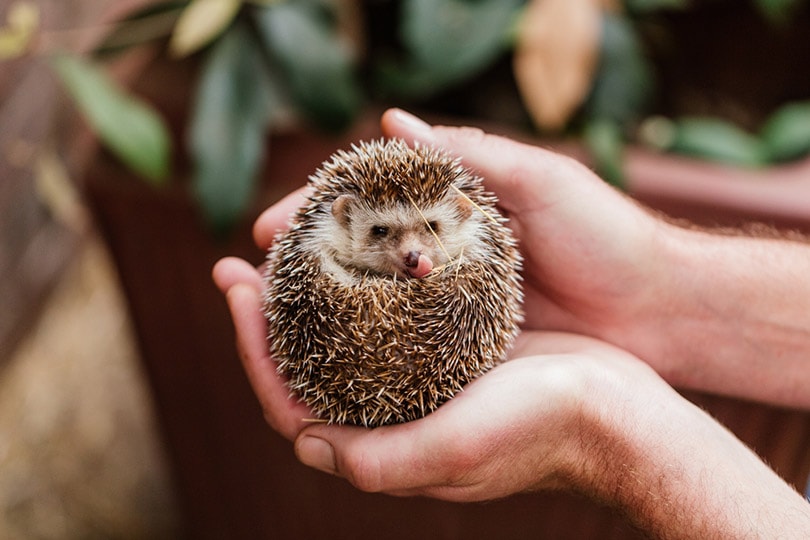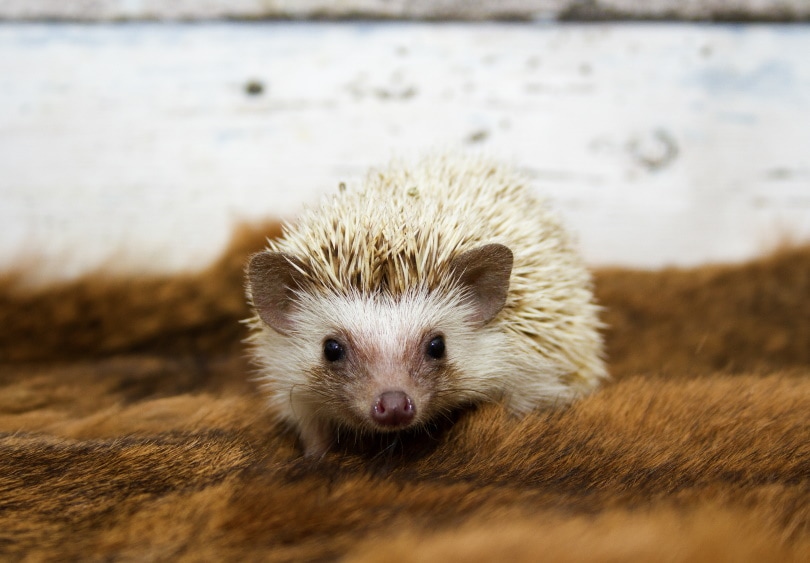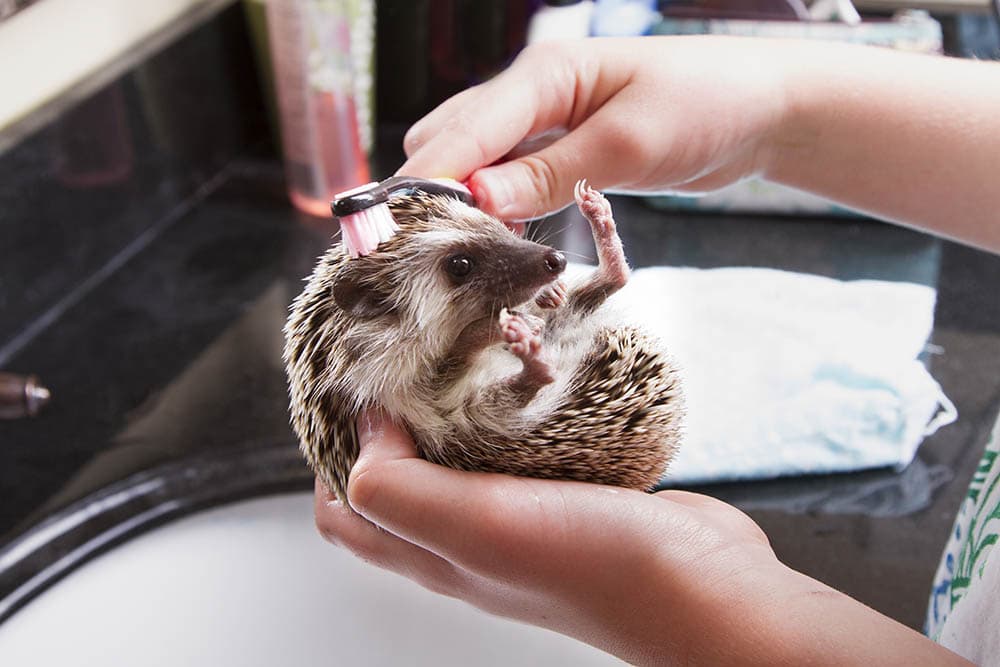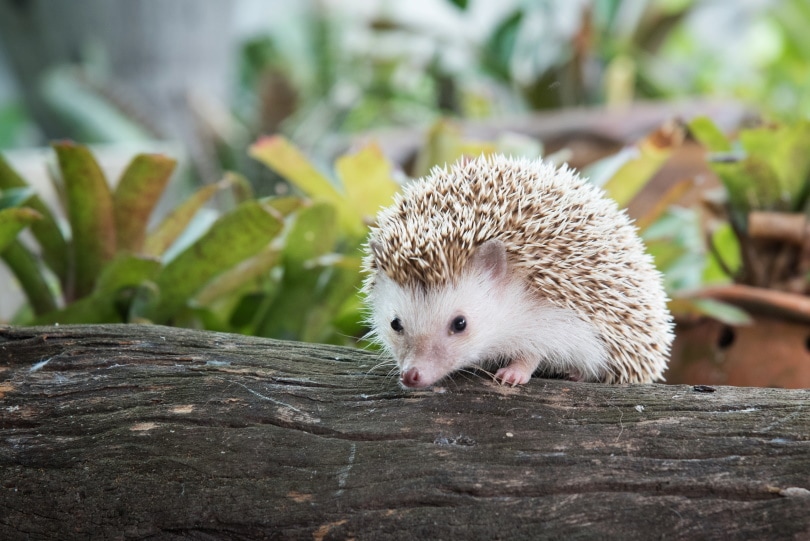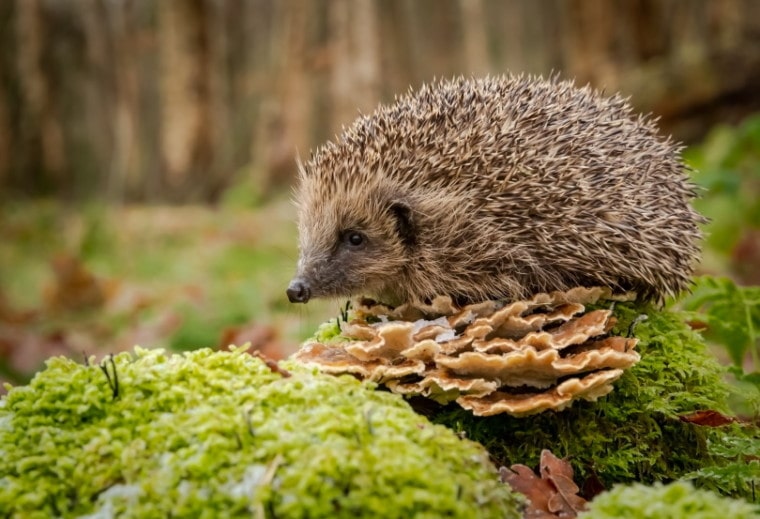
Click Below to Skip Ahead
With such pokey quills, you wouldn’t think that a hedgehog would become one of the most popular pets currently. Still, their unique appearance and adorable faces are only making these animals even more in demand. Hedgehogs have short, skinny legs and cone-shaped bodies. As mammals, they have flexible fur, with some being covered in thick spikes called quills. Hedgehogs can be various shades of black, brown, and white, and despite their small size, they are fairly muscular animals. Because they are so small, many people wonder about their size as a newborn and just how big some of these animals get once they reach full maturity.
Facts About the Hedgehog
Even though more and more people and purchasing these unique pets, the general population still doesn’t know a whole lot about them. Some of these common hedgehog facts might even be a surprise to you.
To start, hedgehogs were named from their activities. These animals root through hedges and undergrowth to find their favorite foods like insects, worms, snails, and frogs. Hedgehogs have about 5,000 quills. Each of the spikes lasts for about one year before it falls out and gets replaced. The quills are also hollow and flexible and only become erect because of their muscles underneath.
Hedgehogs tend to be solitary animals in the wild. They usually only meet up with another hog when they are trying to mate. Litters can range between one and seven hoglets, with the average being between four and five. While we currently know of 17 different hedgehog species, not all of them are suited for life as a pet.

Hedgehog Size and Growth Chart
While there are over 17 different kinds of hedgehogs, there are only a few that are consistently kept as pets. This chart is based off the most popular kind, the African Pygmy, and uses general numbers that could change based off each individual hedgehog.
| Age | Weight Range | Length Range |
| Newborn | 1–3 ounces | 1–2 inches |
| 1 month | 4–6 ounces | 1–2 inches |
| 2 months | 7–9 ounces | 2–4 inches |
| 3 months | 10–12 ounces | 2–4 inches |
| 4 months | 13–15 ounces | 4–12 inches |
| 5 months | 1–2 pounds | 4–12 inches |
| 6 months | 1–3 pounds | 4–12 inches |
When Does a Hedgehog Stop Growing?
The time it takes for a hedgehog to reach full maturity depends on a variety of factors like diet, genetics, and species. In general, most hedgehogs tend to be full size when they are around 6 months old. However, it takes some types longer. The true timeframe for these animals to reach full size could take up to 11 months. Again, it depends on numerous factors that are both in and out of our control.
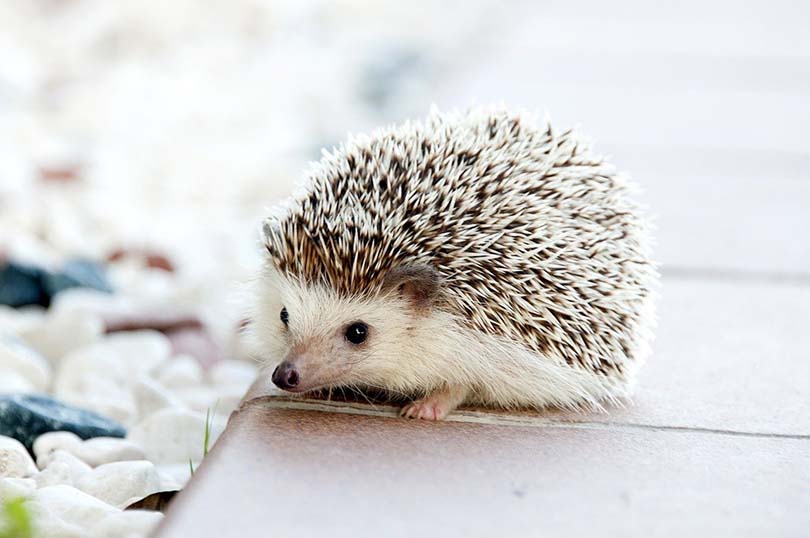
Factors Affecting the Size of Hedgehogs
Just like humans, there are different variables that affect the size of how large a hedgehog becomes. The most obvious one is gender. Male hedgehogs tend to be larger than most females. Genetics is the biggest determining factor of size.
Aside from DNA, there are other things that could play a factor in the size of your hog. Diet is a huge contributor. Without a healthy and well-balanced diet, a hedgehog will likely remain smaller as they develop.
The breed is another important thing to consider when thinking about the size of a hedgehog. The overall weight of a European hedgehog is going to be very different than an African Pygmy.

Ideal Diet for Maintaining a Healthy Weight
While the technical diet for a hedgehog is an insectivore, many people consider them omnivores because of the range of foods they eat. Their main food sources come from invertebrates. Spiders, snails, caterpillars, millipedes, slugs, frogs, beetles, and other insects are all a part of their natural diet. However, they have been to snack on a few fruits and veggies as well.
The diet of captive animals is a little different than wild ones. Captive hedgies should be given a high-protein diet with a minimum of 30–50% protein and 10–20% fat.
How to Measure Your Hedgehog
Measuring your hedgehogs as they age is a simple way to ensure they are developing at a normal rate and staying healthy. Don’t be intimidated by the quills on their backs. Make sure that your hog is showing no signs of discomfort or nervousness before proceeding.
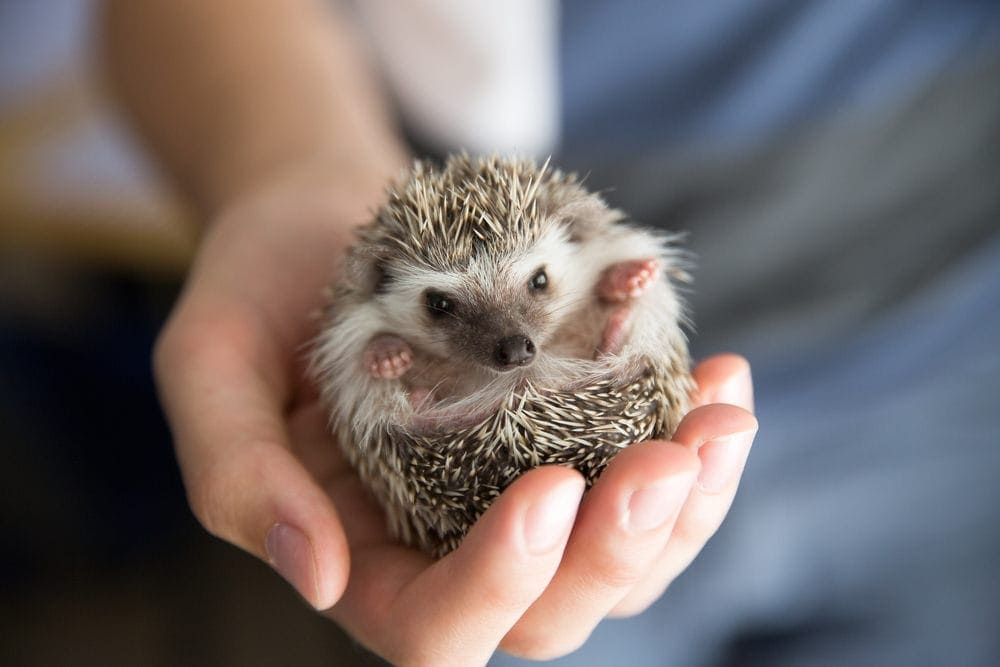
You should take three different measurements during this process. The first measurement is taken around the middle of the hedgehog for the latitudinal circumference. Place a flexible measuring tape under your hog and gently wrap it around until you discover the circumference. For the longitudinal circumference, keep the tape secure under the hedgehog and instead wrap it all the way around the length of their bodies. For a general length, simply measure from the tip of the nose to the end of the tails.
The last measurement to ensure your hog is healthy is its weight. This can be done with a kitchen scale and taken in whichever unit of measurement you prefer.
Conclusion
Information on how large your hedgehog should be as they develop isn’t always readily available. It helps to know that as long as your baby hedgehogs continue to show growth until they are right around 6 months of age, then they are probably staying relatively healthy. However, one thing you do want to be careful of is not to let them become obese. Overweight hedgehogs face several other health issues, reducing their overall quality of life.
Once your hedgie has reached their mature age, it isn’t all that hard to maintain their size. Keep them active by providing plenty of room to move in their enclosures. Add in an exercise wheel or other toys that are going to keep them active. Ensure that they eat a variety of gut-loaded insects and other healthy foods as well. Also, keep a fresh supply of water in their cage at all times. Hedgehogs that are taken proper care of will grow to reach a healthy size that is easy for any first-time pet owner to maintain.
Featured Image Credit: Coatesy, Shutterstock

